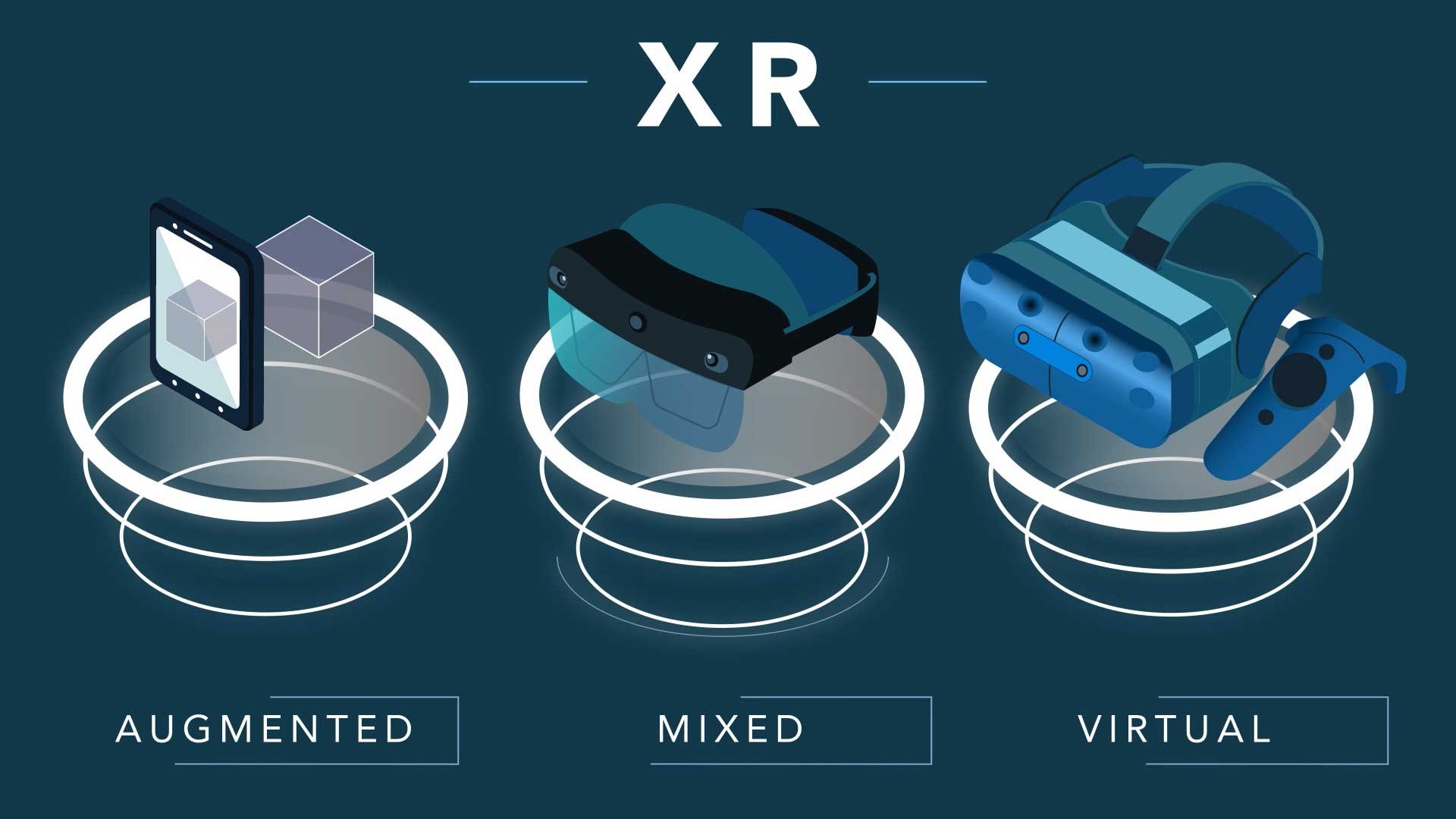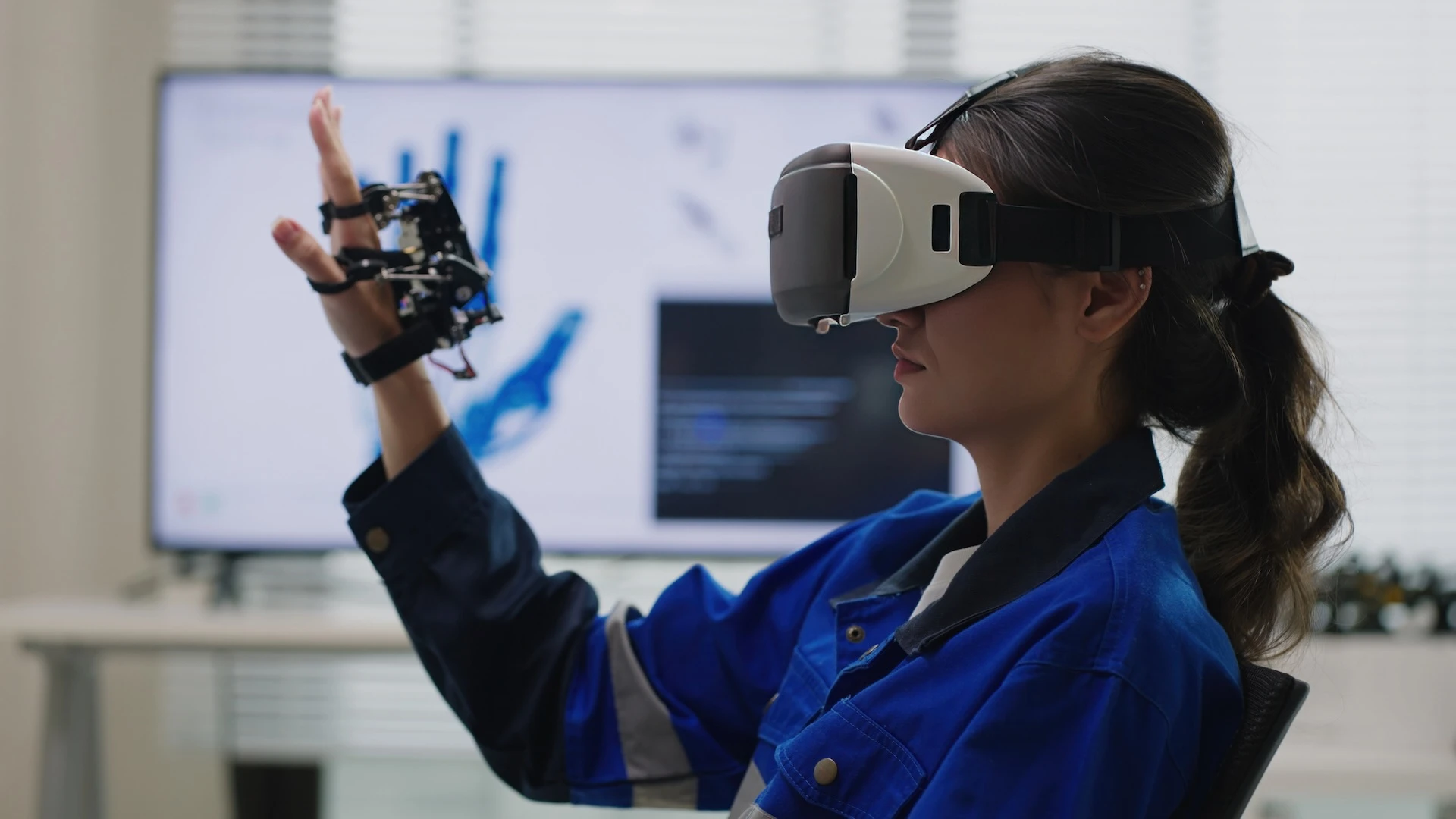The Immersive Frontier: Exploring the Expansive Realm of XR technology
The digital landscape is undergoing a profound transformation, shifting from flat screens to immersive environments. At the heart of this revolution lies Extended Reality (XR), an umbrella term encompassing Virtual Reality (VR), Augmented Reality (AR), and Mixed Reality (MR). These technologies are not mere novelties; they are reshaping industries, revolutionizing human interaction, and redefining the boundaries of experience. This expansive article delves into the intricacies of XR, exploring its diverse applications, current challenges, and the promising future it holds.
XR represents a spectrum of technologies that blur the lines between the physical and digital worlds. To fully grasp its potential, it’s essential to understand the nuances of its constituent components:
Virtual Reality (VR): Escaping Reality

VR transports users into entirely simulated environments, effectively replacing their real-world surroundings. This is achieved through head-mounted displays (HMDs) that track head movements and render stereoscopic 3D images. Users can interact with these virtual worlds using hand controllers or motion tracking systems, creating a sense of presence and immersion.
Augmented Reality (AR): Enhancing Reality
AR overlays digital information onto the real world, enhancing our perception of our surroundings. Unlike VR, AR doesn’t replace reality; it augments it. This is typically achieved through smartphones, tablets, or AR glasses that project digital images onto the user’s field of view. Examples include interactive maps, virtual product try-ons, and location-based games.
Mixed Reality (MR): Blending Realities
MR takes AR a step further by allowing digital and physical objects to coexist and interact in real-time. This technology enables users to manipulate virtual objects as if they were physically present, creating a seamless blend of the real and digital worlds. MR applications range from collaborative design and remote assistance to advanced training simulations.

The transformative power of XR is being felt across a multitude of industries, driving innovation and reshaping traditional workflows:
Gaming and Entertainment: Immersive Experiences
The gaming industry has been a pioneer in XR adoption, leveraging VR and AR to create immersive and engaging experiences. VR games transport players into virtual worlds, while AR games overlay digital elements onto real-world environments. This has led to the development of new genres, interactive narratives, and social gaming experiences.
Education and Training: Learning by Doing
XR offers unprecedented opportunities for education and training, providing immersive and interactive learning experiences. VR simulations can recreate complex scenarios, allowing students and trainees to practice skills in a safe and controlled environment. AR can enhance traditional learning materials by overlaying interactive 3D models and information onto textbooks and worksheets.
Healthcare: Transforming Patient Care
XR is revolutionizing healthcare by providing innovative tools for diagnosis, treatment, and rehabilitation. VR can be used for pain management, anxiety reduction, and physical therapy. AR can assist surgeons by overlaying real-time patient data onto their field of view during procedures. MR can enable remote consultations and collaborative surgical planning.
Manufacturing and Engineering: Streamlining Processes
XR is transforming manufacturing and engineering by providing tools for design, prototyping, and maintenance. VR can be used to create virtual prototypes, allowing engineers to visualize and test designs before physical production. AR can assist workers on the factory floor by providing real-time instructions and information. MR can enable remote collaboration and troubleshooting, reducing downtime and improving efficiency.
Retail and Marketing: Enhancing Customer Engagement
XR is transforming the retail and marketing landscape by providing immersive and personalized shopping experiences. AR can be used to create virtual product try-ons, allowing customers to visualize products in their own homes. VR can create virtual showrooms, allowing customers to explore products and environments remotely. MR can enhance in-store experiences by providing interactive displays and augmented product information.
Real Estate and Architecture: Visualizing Spaces
XR is revolutionizing the real estate and architecture industries by providing immersive tools for visualizing and presenting spaces. VR can be used to create virtual tours of properties, allowing potential buyers to experience spaces remotely. AR can overlay digital information onto blueprints and construction sites, providing real-time data and visualizations.
The development and deployment of XR technologies rely on a complex interplay of hardware and software components:
Head-Mounted Displays (HMDs): The Gateway to Immersion
HMDs are essential for VR and MR experiences, providing stereoscopic 3D displays and tracking head movements. Advancements in display technology, such as higher resolutions and wider fields of view, are enhancing immersion and realism.
Hand Controllers and Motion Tracking: Interacting with Virtual Worlds
Hand controllers and motion tracking systems allow users to interact with virtual objects and environments. Advancements in sensor technology are enabling more precise and intuitive interactions.
AR Glasses and Mobile Devices: Augmenting Reality
AR glasses and mobile devices are used to overlay digital information onto the real world. Advancements in display technology, camera technology, and processing power are enhancing AR experiences.
Software Development Kits (SDKs) and Platforms: Building XR Applications
SDKs and platforms provide developers with the tools and resources they need to create XR applications. Advancements in software development are enabling more sophisticated and user-friendly XR experiences.
5G and Cloud Computing: Enabling Seamless Connectivity
5G and cloud computing are essential for delivering high-quality XR experiences, particularly for mobile and remote applications. 5G provides high bandwidth and low latency, while cloud computing provides the processing power and storage capacity needed for complex XR applications.
Despite its immense potential, XR faces several challenges that need to be addressed to ensure its widespread adoption:
Hardware Limitations: Cost, Comfort, and Accessibility
HMDs and AR glasses can be expensive, bulky, and uncomfortable to wear for extended periods. Addressing these limitations is crucial for improving user experience and accessibility.
Software Development: Complexity and Interoperability
Developing high-quality XR applications requires specialized skills and tools. Ensuring interoperability between different XR platforms and devices is also a significant challenge.
Content Creation: Scalability and Quality
Creating compelling and engaging XR content is a time-consuming and expensive process. Developing efficient and scalable content creation workflows is essential for driving adoption.
Ethical Considerations: Privacy, Security, and Accessibility
XR raises ethical concerns related to privacy, security, and accessibility. Ensuring responsible development and deployment of XR technologies is crucial for building trust and fostering widespread adoption.
Social Impact: Addressing Potential Disruption
The widespread adoption of XR could have significant social implications, including job displacement and changes in social interaction. Addressing these potential disruptions is essential for ensuring a smooth transition to an XR-enabled future.
Despite the challenges, the future of XR is bright. Advancements in hardware, software, and content creation are driving innovation and expanding the possibilities of immersive experiences.
Increased Accessibility and Affordability
As hardware costs decrease and technology improves, XR devices will become more accessible and affordable, driving wider adoption.
Enhanced Interactivity and Realism
Advancements in sensor technology, artificial intelligence, and graphics rendering will enhance interactivity and realism, blurring the lines between the real and virtual worlds.
Integration with Other Technologies
XR will become increasingly integrated with other technologies, such as artificial intelligence, the Internet of Things (IoT), and blockchain, creating new and innovative applications.
Ubiquitous XR Experiences
XR experiences will become increasingly ubiquitous, seamlessly blending into our daily lives and transforming how we work, learn, and interact.
The Metaverse: A Shared Virtual Reality
The concept of the metaverse, a persistent and shared virtual reality, is gaining traction. XR technologies will play a crucial role in building and populating the metaverse, creating new opportunities for social interaction, commerce, and entertainment.
In conclusion, XR technology is poised to revolutionize the way we interact with the digital world and each other. While challenges remain, the potential benefits are immense. As the technology continues to evolve, we can expect to see even more innovative and transformative applications emerge, shaping the future of human experience. The immersive frontier is vast, and we are only beginning to explore its boundless possibilities.



